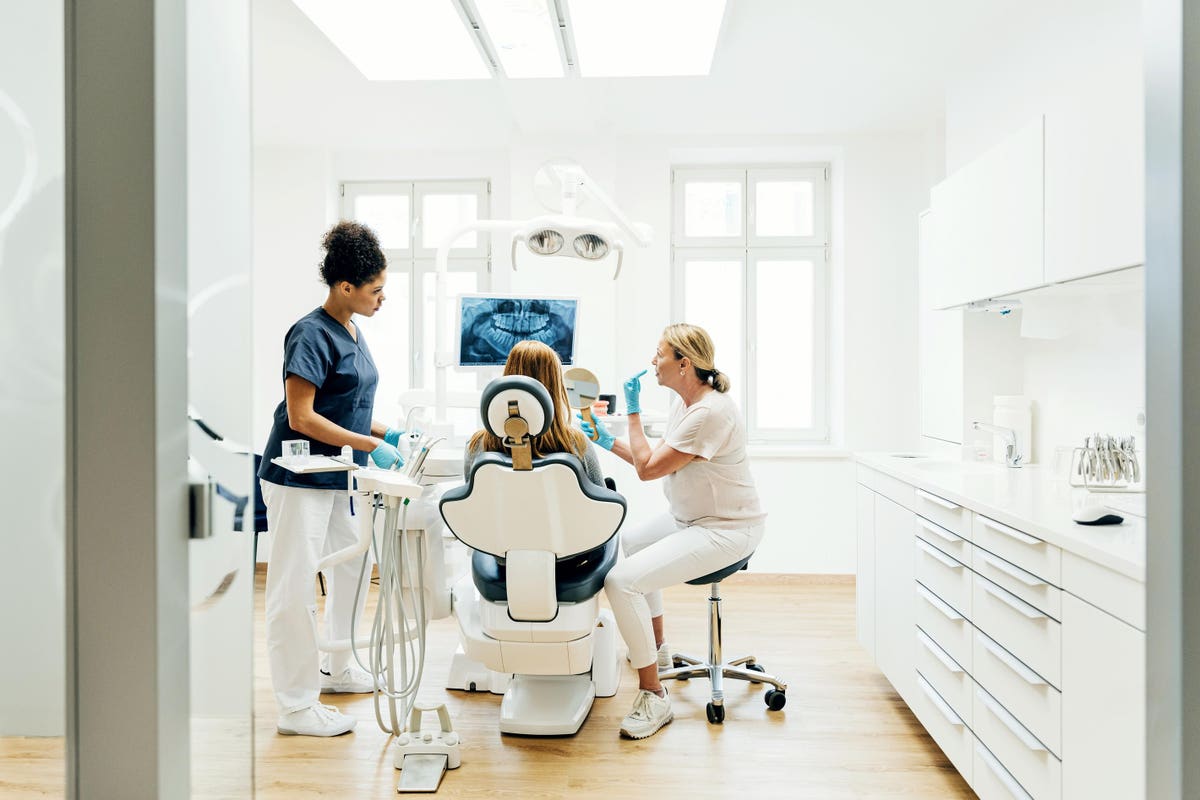Cindy Roark, DMD, MS, is Chief Clinical Officer & SVP at Sage Dental and a member of Harvard School of Dental Medicine’s Board of Fellows.
The dental industry continues to experience rapid growth, further accelerated by recent innovations in technology and elevated investment and acquisition activity. As the industry expands, the dental service organization (known as a “DSO”) model is following suit thanks to the significant benefits the model brings to dental practices. In fact, the DSO market is predicted to experience a growth rate of nearly 100% between 2018 and 2025.
The DSO model enables dental practices to streamline management and operations, thus allowing providers to spend more time on delivering quality dental care to patients and less time navigating the administrative and financial aspects of running a smooth practice. However, as DSOs continue to grow, we can’t lose sight of the significance of maintaining consistency across all practices. This consistency is not only essential to delivering the highest quality care to patients but also to achieving overall organizational growth.
As a leader in the dental industry for more than two decades with private practice, nonprofit and DSO experience, here are four tips DSOs can leverage to achieve clinician consistency across all practices, regardless of size.
Implement training for the most up-to-date technology.
Dentistry technology is only becoming more modern year after year, and dentists are showing more eagerness to adopt the latest, cutting-edge tech. However, as technology advances, your clinicians should be growing alongside it to deliver consistent, high-quality patient experiences. As your DSO adopts new technology to keep pace with evolving patient expectations and needs, it is equally as important that every clinician within your network is thoroughly trained on how to use it. Practitioners are already limited on time, spending hours navigating administrative work and patient documentation in addition to actively seeing patients. Technology training should not feel like an added burden for practice staff but a useful tool in advancing quality care.
Whether your DSO is leveraging new AI imaging technology to improve diagnostic accuracy or installing an update to existing practice management software, ensure all practices have access to the necessary training materials, contact support and the latest updates on how the tech should be used. Consider quarterly organization-wide training refreshers to keep your network up-to-date, and work closely with your software vendors so that all staff remains comfortable with the technology.
Prioritize ongoing education training.
Continuing education is not only a regulatory requirement for license renewal but also key to every practice within your DSO network remaining on the same page when it comes to delivering quality care that is up to par with the latest advancements in dentistry. For example, my DSO launched a program that enables dental professionals throughout our network to receive ongoing training in a wide range of areas such as implants, overdentures, clear aligners and more. The program’s curriculum consists of 100 hours of continuing education that includes hands-on patient treatment, as well as in-person and online courses.
The nature of this type of program not only ensures professionals throughout your network are receiving consistent and quality education but also that your entire network is obtaining the training needed to keep pace with changes within modern dentistry and enhance their own professional growth.
Enhance peer-to-peer recognition.
Dentistry is an industry ripe with burnout—with practitioners reporting alarming increasing rates of stress and anxiety. When navigating the complex and busy landscape of balancing patient care and administrative work, it is easy to lose sight of the accomplishments that should be celebrated.
Healthcare employees who work at an organization that recognizes teams and groups are 3.9 times as likely to feel connected to the culture of their organization, and this isn’t any different for dental practices. Peer recognition programs can lead to growth in internal communication and, most notably, improved morale and motivation. For example, when my DSO implemented a program to continually recognize our team members who demonstrate exceptional performance, we saw a renewed drive within our network to enhance the patient experience and an influx of new creative ideas to drive organizational growth.
Use the right communication assets.
The ultimate key to consistency in any context is communication. If your DSO is not already, look into setting up an intranet site or communication hub that has all the up-to-date information on compliance training, software training, company-wide updates and protocols and more. By openly communicating expectations and existing resources, DSOs can ensure all clinics within their network fully understand organizational goals.
Consistency might look different for each organization, but as the industry continues to advance, DSOs must implement and maintain an effective strategy that equips every clinician with the necessary knowledge and resources to deliver quality, consistent care. By creating a united front, your organization will be able to adapt and grow in an ever-evolving industry.
Forbes Business Council is the foremost growth and networking organization for business owners and leaders. Do I qualify?
Read the full article here





